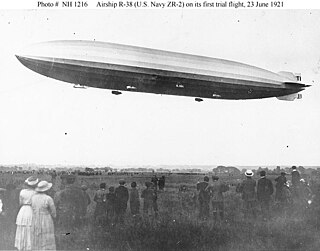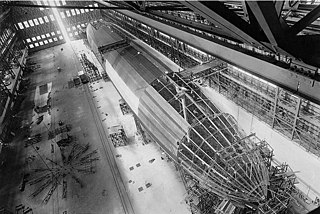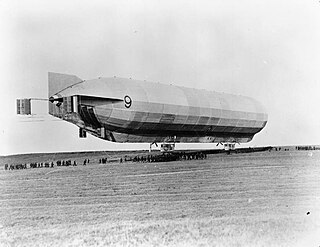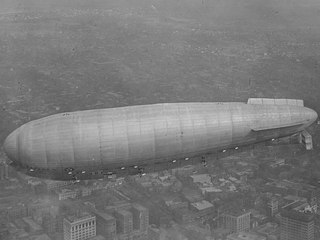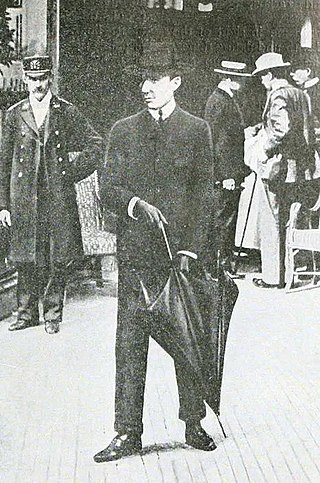Airships designed by Henri Julliot for Lebaudy Frères
Lebaudy Frères, Moisson près Mantes (Seine-et-Oise). Builders of pressure airships of the keel-girder type to the designs of M. Henri Juillot (sic). Keel-girder of steel-tubing, forming a rigid understructure. Trim controlled by lifting planes.
| Works No. | Name (Trials) | Length (m) | Beam (m) | Volume (m³) | Power (h.p.) | Speed (km/h) | Notes | Picture |
|---|---|---|---|---|---|---|---|---|
| 1 | Lebaudy (November 1902) | 56.5 | 9.8 | 2,284 | 40 | 35 | Experimental airship. Astra hull. One Mercedes engine; twin-screws. Ballonet: 300 m³. Was the first successful modern airship. Best endurance : 98 km. in 2.75 hours. Refitted with a new hull, the airship made 12 ascents but was carried away by the storm on 28 August 1904 and badly damaged. |  |
| la | Lebaudy II. (August 1904) | 56.5 | 9.8 | 2,660 | 40 | 35 | After damage in August 1904 the Lebaudy I was repaired and rebuilt as the Lebaud II. Ballonet: 500 m³. Resumed her ascents, but was again laid up for repairs of her hull, which had been torn by a storm when landing at the Camp de Châlons. |  |
| Ib | Lebaudy III (July 1905) | 56.5 | 10 | 2,950 | 50 | 35 | After damage in a storm, the Lebaudy II was repaired and rebuilt as the Lebaud III. Reached on 10 November 1905, twice in succession, an altitude of 1,370 m. Her builders sold the airship to the French Army for the nominal sum of Frs. 80,000 ($16,000) in December 1905. | |
| Ic | Lebaudy IV (October 1908) | 61 | 10.3 | 3,300 | 70 | 40 | French Army airship, as rebuilt by the Army Airship Works. Ballonet: 650 m³. One Panhard-Levassor engine; twin-screws. Best altitude, 1,550 m. (in 1908). Was moored in the open for 17 days in the autumn of 1909. Dismantled in 1912. |  |
| 2 | Patrie (November 1906) | 61 | 10.3 | 3,250 | 60 | 45 | French Army airship. Ballonet :650 m³. One Panhard-Levassor engine ; twin-screws. Best endurance:240 km. in 6.75 hrs, after reconstruction. Was carried away by a storm on 30 November 1907; foundered in the Atlantic. |  |
| 2a | (November 1907) | 61 | 10.9 | 3,650 | 60 | 45 | ||
| 3 | La République (June. 1908) | 61 | 10.9 | 3,700 | 70 | 50 | French Army airship. Ballonet: 730 m³. One Panhard-Levassor engine : twin-screws. Best endurance (in closed circuit) : 210 km. in 7.25 hrs. Was destroyed in mid-air on 25 August 1909 through the breaking of one screw which burst the hull. The crew of four were killed. |  |
| 4 | Lebedj (ex-Russie) (May 1909) | 61.2 | 10.9 | 3,800 | 70 | 49 | Russian Army airship. One Panhard-Levassor engine; twin-screws. Ballonet : 900 m³. | |
| 5 | Liberté (August 1909) | 65 | 12.5 | 4,200 | 120 | 45 | French Army airship, as originally (August 1909) laid down. Was modified, on account of the disaster of the République, before being commissioned. | |
| 5a | (June 1910) | 84 | 12.8 | 7,000 | 120 | 53 | Two Panhard-Levassor engines ; twin-screws. Designed endurance : 8 hrs Dismantled in 1914. | |
| 6 | M. II (May 1910) | - | - | - | - | - | Austrian Army airship. Built to Messrs. Lebaudy's designs by the Motor-Luftfahrzeug Gesellschaft of Vienna. | |
| 7 | Morning Post (September 1910) | 103 | 12 | 9,800 | 270 | 55 | British Army airship, purchased by a national subscription started by the London daily newspaper Morning Post . Ballonet : 2,500 m³. Two Panhard- Levassor engines ; twin-screws. On 26 October 1910 the airship flew from Moisson to Aldershot (370 km. in 5.5 hrs), but was damaged on being berthed. Re-commissioned a few months afterwards, the airship was wrecked through faulty manoeuvring on 4 May 1911, by stranding in some trees. |  |
| 8 | Lebaudy Kretchet (1911) | 70 | 14 | 5,680 | 200 | 50 | Russian Army airship, built to Messrs. Lebaudy's designs by the Russian Army Airship Works. Keel-girder, pressure type . Two Panhard-Lavassor engines; twin-screws. | |
| 9 | Lebaudy Capitaine-Marchal (1911) | 85 | 12.8 | 7,200 | 160 | 50 | French Army airship | |
| 10 | Lebaudy Lieut. Selle-de-Beauchamp (1911) | 89 | 14.6 | 10,000 | 200 | 55 | French Army airship | |
| 11 | Lebaudy Tissandier (1914) | 140 | 15.5 | 28,000 | 1,350 | 80 | French Army airship | |
| 12 | (Building) | Tissandier class |

